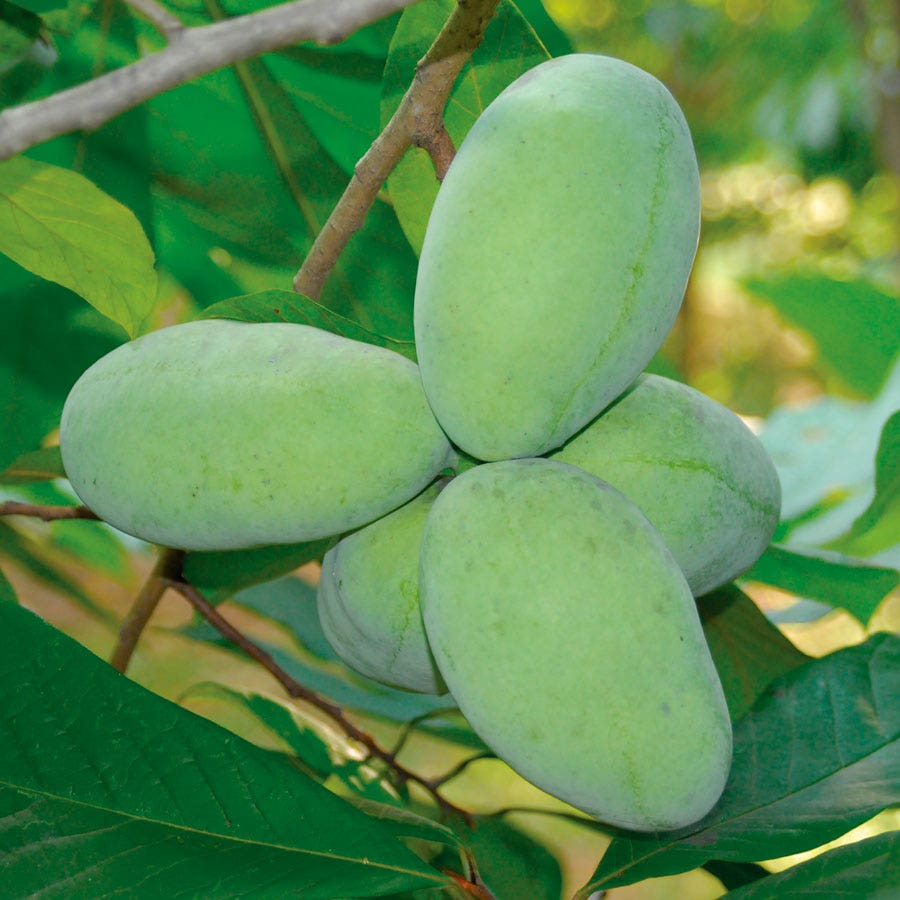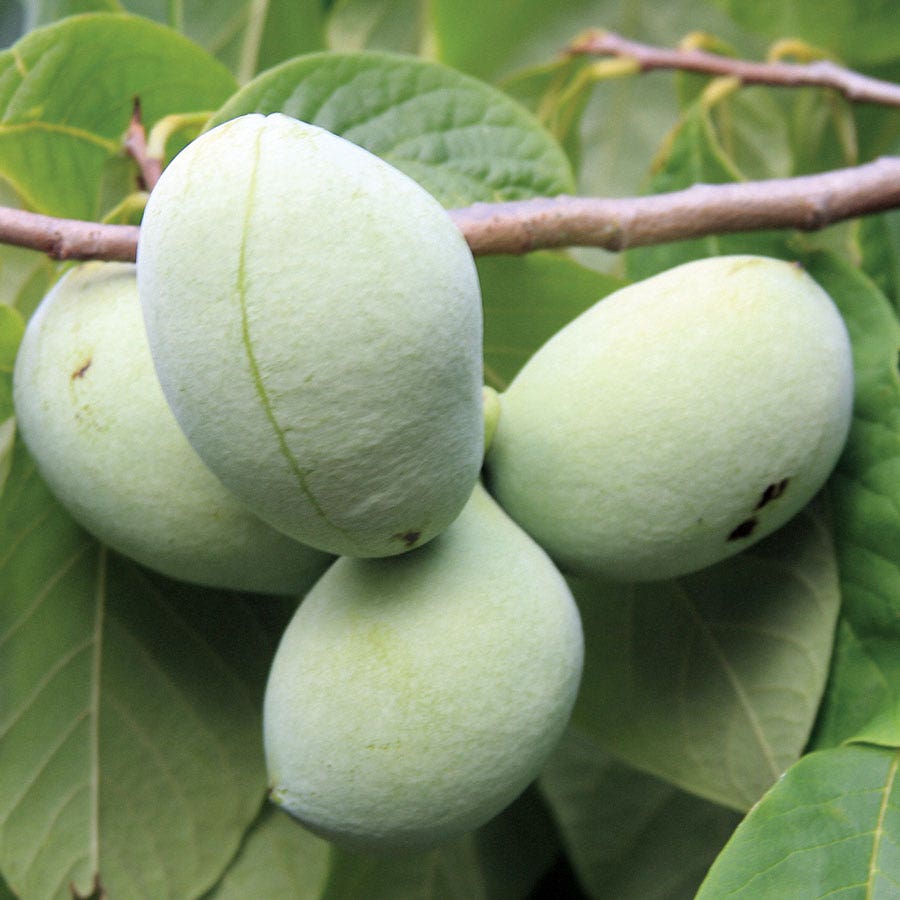parkseed
Asimina 'Mango' Paw Paw
Asimina 'Mango' Paw Paw
Zone compatibility details
Understanding the Prices on Our Product Pages
When shopping on our site, you might notice different types of prices listed for products. Here’s a quick guide to help you understand what each price means:
- Regular Price: The price before any discounts, typically reflecting the median price from the past 90 to 180 days, excluding special promotions and clearance events.
- Now Price: The updated price of an item after a reduction from the regular price. Now Prices are often limited to a short time frame and offer the opportunity to save.
- MSRP: Manufacturer's Suggested Retail Price, provided by the manufacturer as a benchmark to highlight the value of our current pricing.
- Discount Exempt: Products labeled discount exempt are not eligible for discounts or promotional offers.
Please note that product prices are subject to change without notice.
Couldn't load pickup availability
Share
Your ZIP code ✎
Zone compatibility details
This variety’s zone range
—
My hardiness zone
—
The USDA hardiness zones offer a guide to varieties that will grow well in certain climates. Each zone corresponds to the minimum winter temperatures experienced in a given area. Make sure that your hardiness zone lies within the zone compatibility range of this variety before ordering.
Spring Shipping Schedule
Spring Shipping Schedule and Zone Opening Earliest Ship Dates
Note: At Park Seed, we are committed to shipping healthy live plants at the ideal planting time for your zone. In order to ensure our plants are shipped at the optimal conditions, we regularly adjust our shipping timeframes as needed. The below table reflects our current estimate of timing for rose, live plant and bulb shipping this season.
| Zone | Bareroot Roses | Container Roses | Plants & Bulbs | Sweet Potato & Avocado | Citrus | Blooming Blocks |
|---|---|---|---|---|---|---|
| 1-3 | Early-Mid May | Mid May | Mid May | Late May-Mid June | Early-Mid May | Early-Mid May |
| 4-5 | Early-Mid Apr | Late Apr-Early May | Late Apr-Early May | Mid-Late May | Late Apr-Early May | Early-Mid May |
| 6 | Mid-Late Mar | Mid-Late Apr | Mid-Late Apr | Early-Mid May | Early-Mid Apr | Early-Mid May |
| 7 | Early-Mid Mar | Mid-Late Apr | Late Mar-Early Apr | Late Apr-Mid May | Early-Mid Apr | Early-Mid May |
| 8 | Mid-Late Feb | Mid-Late Apr | Late Mar-Early Apr | Mid-Late Apr | Early-Mid Apr | Early-Mid May |
| 9-13* | Late Jan-Mid Feb | Mid-Late Apr | Late Mar-Early Apr | Mid-Late Apr | Early-Mid Apr | Early-Mid May |



Grow Zone
5 - 8
Mature Height in Inches
240"
Mature Width in Inches
need max width meta
Sun / Shade
Full SunPart Shade
Bloom Size
" - "
Tomato Fruit Set
Days to Maturity
Fruit Weight
Soil Tolerance
Normal, loamy and Sandy
Moisture
Moist, well-drained
Description / Asimina 'Mango' Paw Paw
Asimina 'Mango' Paw Paw is a small, shrubby tree valued not only for fruit production but also for ornamental purposes and can fit beautifully into an edible landscape. In spring, the tree blooms in attractive and fragrant purplish brown blossoms followed in early fall by an abundant crop of large, tasty fruit set against a backdrop of yellow fall color. The fruit has attractive orange-yellow flesh with a creamy custard-like texture and a refreshing tropical flavor reminiscent of a mango, banana, and vanilla custard smoothie. Paw paws are a good source of vitamin C, magnesium, iron, copper, manganese, potassium, riboflavin, niacin, calcium, phosphorus, zinc, and several essential amino acids.
An Asimina triloba variety, commonly called paw paw, pawpaw, paupau, or papau, 'Mango' is grafted onto paw paw seedling root stock and is one of the most vigorous varieties. It makes an excellent accent or specimen plant and can be trained as an espalier or grown in a container. In the garden, this paw paw tree can reach up to between 15 to 20 feet tall at full maturity, but it can be pruned to maintain any desired size and shape. In a container, the tree will be much smaller, but it will still flower and set full-sized fruits. However, best harvests occur when 2 or more different varieties are grown together.
Paw paw trees grow best in sunny locations with deep, evenly moist, well-draining soil having a slightly acidic pH.
A native plant, paw paw trees are indigenous to North America. Native plants are not only beautiful but also environmentally friendly. Naturally adapted to the climate and soil conditions of the region, they thrive without fertilizers or extra watering, once established. They also act as natural pest controls, reducing the need for pesticides in the garden. Landscaping with native plants promotes biodiversity and provides shelter and quality food for wildlife and pollinators, bringing gardens to life.
Product Details
Virtual SKU: v2586
Selected Product SKU: 29635
Genus: Asimina
Species: triloba
Variety: 'Mango'
Item Form: Tree Sleeve
Bloom Color: Purple
Foliage Color: Dark Green
Habit: Upright
Light Requirements: Full SunPart Shade
Moisture Requirements:- Moist, well-drained
Bloom End: Mid Spring
Uses:- Beds
- Cuisine
- Fall Color
- Foliage Interest
- Easy Care Plants
- Edible
- Flower
- Fragrance

